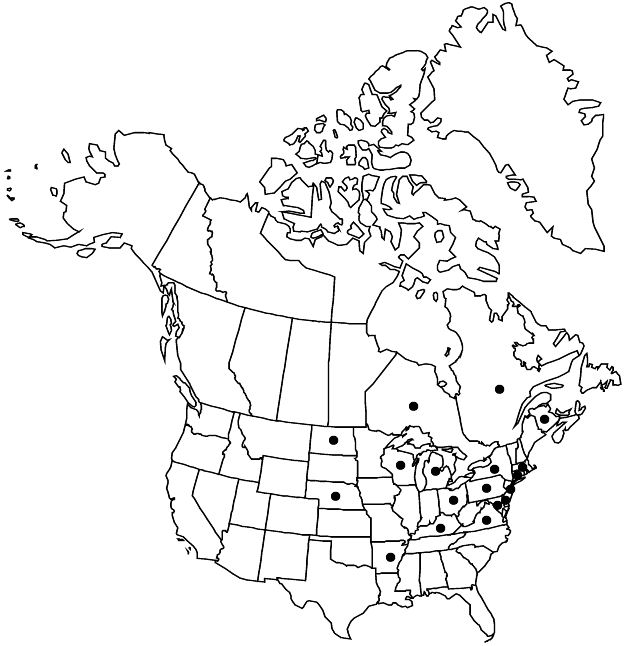Althaea officinalis
Sp. Pl. 2: 686. 1753.
Herbs perennial, to 1.5 m. Stems erect, clustered, branched distally or unbranched, softly stellate-tomentose. Leaves: stipules somewhat persistent, usually caducous, linear-lanceolate, subulate, sometimes 2-fid or dentate, (2–)5–8 mm, densely stellate-hairy; petioles 1–6 cm, reduced on distal leaves, usually shorter than blade; blades of proximal leaves ovate or obscurely 3-lobed less than 1/2 to midrib, distal leaves deltate-ovate to ovate, (2–)4–10 × 2–7 cm, base truncate to cuneate, lobes acuminate or broadly acute to obtuse, middle lobe larger than others, deeply plicate, margins irregularly dentate to crenate-serrate, surfaces softly stellate-tomentose, ribs very prominent abaxially. Inflorescences solitary flowers or 2–4-flowered fascicles in leaf axil, sometimes aggregated apically into terminal false racemes. Pedicels/peduncles 0.5–4 cm; involucellar bractlets 8–12, erect, linear-lanceolate, 1/2 length of calyx, 6 mm, lobes 2–6 × 1–2 mm, stellate-tomentose. Flowers: calyx 8–10 mm, lobes narrowly ovate-acuminate, 6 mm, 2 times as long as tube, stellate-velutinous; petals usually pale pink, rarely white, cuneate-obovate, 7.5–15 × 6–13 mm, 2–3 times as long as calyx, apex obtuse or notched; staminal column 3–5 mm, glabrous or sparsely papillose-hairy; anthers in upper 1/2, dark purple; style 15–20-branched. Fruits partially concealed by incurved, somewhat accrescent calyx lobes, 7–9 mm diam.; mericarps 15–20, brown, unwinged, orbiculate-reniform, 1.5–2.5 × 2–3 mm, rugose, lateral surface smooth, membranous, dorsal surface stellate-tomentose with medial furrow. Seeds brown, reniform-round, 1.5–2 × 1–1.5 mm, glabrous. 2n = 42.
Phenology: Flowering summer–fall.
Habitat: Wet, disturbed areas, along streams, brackish sand, coastal marshes
Elevation: 0–200 m
Distribution

N.B., Ont., Que., Ark., Conn., Del., Ky., Md., Mass., Mich., Nebr., N.J., N.Y., N.Dak., Ohio, Pa., Va., Wis., Eurasia, n Africa.
Discussion
Althaea officinalis is occasionally cultivated for ornament, food (especially for the mucilaginous root sap once used with sugar to make marshmallows), and as a medicine; it occasionally escapes. There are few recent North American collections.
Selected References
None.
